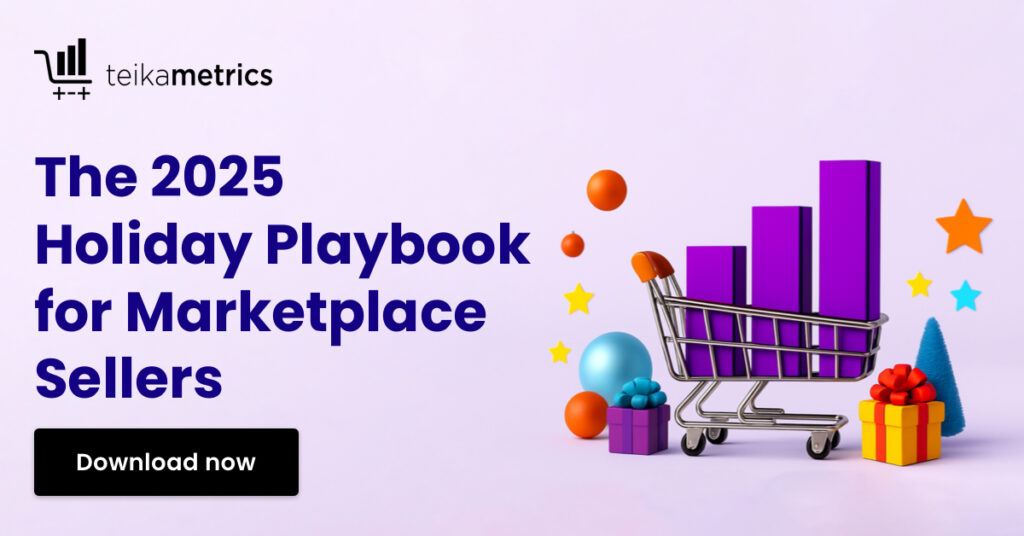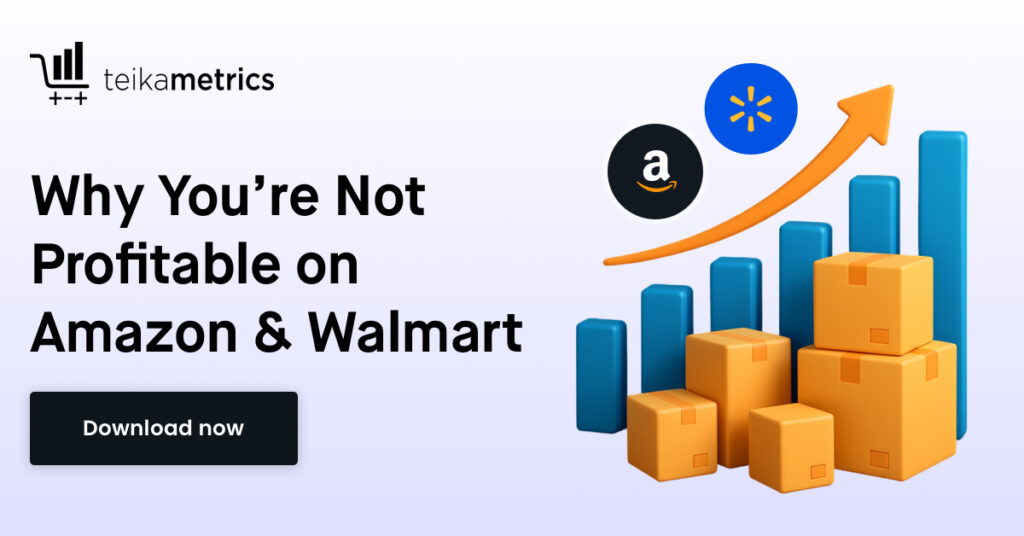As the raw material and container costs are edging higher, adjusting wholesales becomes more and more timely. Some already got theirs, some can’t get any due to lack of VM contact or other factors.
Naturally, this brings up the question, would trading via Seller Central be a better option?
To help answer this question, a series of four articles are available to provide guidance and help evaluate all factors before making this important decision.
If the choice is to go ahead and switch some or all products to Seller Central (SC) from Vendor Central (VC), the next question usually is: should it be a hybrid approach?
The most important concept to take away is this: Amazon is not a collection of brands. It is a collection of ASINs, one ASIN at a time. As such they are evaluated individually and independently from one another.
Therefore when it comes to evaluating a decision whether to move to SC from VC, I suggest adopting the above logic. Amazon certainly will be thinking about your products that way.
Which brings us to the first key point of discussion: What is the end goal?
There are multiple levels here:
What is the end goal of the business?
- Sell
- Grow
- Operate as a retirement fund/provide consistent income
- etc.
And most importantly to the VC or SC question:
What is the end goal for your products?
Remember individually, not as one portfolio.
The first 2 questions provide a good context that the third question can help bring to life and implement.
Therefore, it’s worth discussing what the best way is to reach those goals – we’ll take the 3 above-mentioned, usually very common goals a business owner would have, and see how the hybrid approach may or may not fit in.
Sell the business
Scalability and equity growth is what most investors will be looking for, on top of the uniqueness of the product which we aren’t going to discuss in this article.
So then how do we create scalable equity growth that investors would appreciate?
First off a VC AND SC account, both in good standing says more than anything as far as first impressions go. If you can present a well thought through plan to the investors and the VC/SC accounts reflect that plan already (even if partially), the first battle is won!
Therefore having multiple vendor codes for the different supply chain programs (dropship, stocking, pallet, FCA/MFP and FOB/MPP) available to use adds value. The value is increased when the pricing structure to begin with either doesn’t yet exist, so the investor can price the products, or the wholesales are priced correctly. Meaning, the dropship is the highest, stocking, then pallet, etc decreasing with gaps just the right size to incentivize Amazon to order from the vendor code that is your preference. Not Amazon’s preference.
With this in mind, what the investor will be looking for is top-line scalability, understandably, and bottom line scalability as well. Meaning profit dollars and profit % are equally important metrics.
How does this relate to VC vs SC? Usually, SC would give you the highest profit dollars per unit (all things being equal in most categories) and Direct Import would give you the highest profit % based on revenue. However usually low-profit dollar per unit.
Hopefully the above shows that being able to give an investor the opportunity to switch products from one extreme, SC for-profit dollar generation to the other, DI for scalable profit % generation that drives quantity is a real asset. Only a very low % of vendors/sellers have accounts that reflect both the right wholesale structure and profit structure on all supply chain routes. If you have the opportunity to build it out, I can’t recommend it highly enough. The last thing an investor wants to deal with is cleaning up pricing and profitability issues. Taking that headache away pre-selling has a beneficial impact on the multiple offered.
Not a common differentiator that most forums talk about because it’s difficult to achieve. Which is the exact reason why investors are willing to pay a premium for it. Worth considering in my opinion.
Grow/scale but keep the ownership of the business for the foreseeable
The available options are important as described above in this scenario as well, but the more important part is to be able to take the next step. Here’s an example: there is no better program to scale an ASIN than being Direct Import (DI) onboarded (incoterm doesn’t matter for this argument, that becomes a later stage optimization concern).
Therefore my recommendation for a scale/growth business is to:
- Calculate the short-term profit loss it means to keep the head ASINs on VC, whichever domestic program Amazon currently procures it from.
- Consider the short-term profit loss as an investment into the ASIN’s ability to be DI onboardable.
- Continue building the forecast of the ASIN consistently and maintain Amazon’s profitability.
- Which, if done well, will allow the product to be onboarded onto DI as soon as Minimum Order Quantity (MOQ) hits 8-12 weeks of forecast.
- The 8-12 weeks of forecast turnover in our experience allows the DI self onboarding tool to accept wholesales that grant 40%+ margins for the vendor generally speaking.
- Cash in on the short-term loss via fulfilling only DI Purchase Orders going forward.
The above process requires some patience but provides immense benefits as DI products tend to have better and more consistent availability, require lower cash investment to generate profit, and in most cases, also allow for brands to negotiate lower product costs with factories due to the increased quantity.
Seller Central tends to play a small-ish role or rather support role in a growth/scale business as long as VC is also available. The reason is that for the head products, brands would usually want to simplify their supply chain to save on costs and boost profit margin. Which requires focusing effort on the head products and bringing them into either DI into FBA or DI via VC as soon as possible. Trying both at the same time tends not to provide the benefits we are after. Mid and long-tail products’ role in the scaling would be dependent on how far they are from being DI eligible.
Within 12 months tends to lead towards keeping them on VC for the short term and onboard into DI as soon as they reach 12-13 weeks of inventory turnover for their MOQs.
Longer than 12 month wait period is when SC can play an important role, don’t forget the forecast still captures SC sold products as well since it works on an ASIN level regardless of SC or VC sold! Products that require longer scale times usually work out better to lengthen the scale time a bit but have a healthy profit dollar per unit while scaling. Then switch back to VC as soon as DI eligibility arrives.
A further consideration in a growth/scale model re SC or VC that highlights the importance of the ASIN level selection is to balance the business’ need for both scalable profit % and profit dollar. The profit % driven ASINs will be great automated profit generators, however bills need paying, and to self-fund the business, cash flow boost can easily come from a dedicated group of ASINs optimized for-profit dollars if they are far away from DI eligibility. In my experience, it’s worth the consideration to go about this question strategically and on an ASIN level.
Operate the business as profit generator/cash cow
Immediate or short-term cash needs almost became the synonym of SC driven sales. The default economics of VC’s revenue being on wholesale vs SC is on retail price creates an unfair advantage when it comes to optimizing your Amazon business for profit dollars.
On top of that, the fixed 15% (for most categories anyways) referral fee tends to allow for better margin dollars vs VC with the uncertainty of annual trading terms increases.
Not all ASINs are equal and some important call-outs regarding advertising efficiency when doing the hybrid approach
Other than business end goals/objectives, another factor worth considering when discovering the hybrid method is that not all ASINs are created equal. Certainly not in the eyes of Amazon.
The current dynamics behind Amazon’s profitability (meaning the VS side) which directly impacts your ability on VC to profit and scale equally favors almost unfairly products that scale quickly and sell high and consistent quantities. Highly seasonal products tend to be fine a well but make sure you watch out for that end-of-season ramp down and not leave any inventory in Amazon FC’s as they’ll bite back the next season!
This means lower sellers, slow mowers, especially super heavy bulky (SHB) products tend to not fly as well on VC. This is the nature of where Amazon wants to drive their business towards. High inventory turns and, in parallel, reduction of aged/unhealthy inventory to reduce their own operational costs and hence improve profits.
This leads me to say it’s better not to fight VC’s direction on this one. Warehouse space is unlikely to get more affordable especially in large metro areas and domestic fulfillment isn’t expected to slash prices either. Therefore products that fit the above description, I’d recommend staying ahead of the curve a develop a backup plan. SC being an excellent option and usually better than direct fulfillment.
This is where the beauties of a hybrid approach shine. Amazon really does offer options for all products and brands – you just have to understand which one is the best fit for your portfolio. One ASIN at a time.
Advertising with the hybrid approach
Switching gears to the last piece, advertising! Odd as it may sound, executing a hybrid approach well versus incorrectly will have a major impact on the revenue-generating efficiency of your advertising dollars. It’s worth getting it right the first time.
The basic thesis is that ad campaigns require:
- Ramp-up time
- Consistent delivery and careful optimization
Ramp-up time is not something we can shortcut if on the other side we want to see low ACOS and high incremental sales. Incremental being the important word here.
Usually, all things being equal, 4-6 weeks are required till a campaign structure reaches optimal efficiency and is ready to scale. During the 4-6 weeks, it will take investment and patience so that when you get to the other side, you can enjoy the fruits – low, sustainable ACOS and incremental sales.
It goes without saying, therefore that the best thing you can do is to only go through the initial ramp-up period once. Saves an awful lot of bottom line and time investment.
How does this relate to the hybrid approach?
Say you have an ASIN that sells on VC for a period of time then goes onto SC then back to VC.
Because we are talking about 2 separate ad accounts (in Amazon’s eyes), even if you migrate the campaign structure from one ad account to another what happens is the following:
- Product sells on VC → first 4-6 weeks ramp-up
- Product sells on VC → week 7 onwards efficient campaign yielding fruits of the previous 6 weeks
- Product switches to SC → first 4-6 weeks ramp up all over again
- Product switches to VC → first 4-6 weeks ramp up all over again
In a nutshell every single back and forth between SC and VC damages campaign efficiency significantly. The best thing you can do therefore is to avoid it.
Avoidance requires one primary platform to be selected and sticking with that platform. Which doesn’t only allow your ad campaigns to run smoother, therefore more consistent revenue and higher profitability but also ties into the above points made regarding allocation of ASINs to one platform strategically is a key factor of your success.
The ad efficiency does a great job supporting that very point with immediately measurable financial benefits.
So then, hybrid approach – yay or nay?
Overall? Yay! It can provide excellent benefits (going back to the ability to customize your portfolio on an ASIN level so that you can optimize your profit if you need more dollars per unit vs want to scale with a consistent margin!).
The caveats being:
- Strategic ASIN level allocation
- The allocation reflects the overall business goals and supports them
- Nominated primary platform is required – it being VC or SC depends on the details
With that and as long as those caveats are taken into consideration when making the decision, the hybrid approach can and will work in your favor!
About the author
Peter Beke is one of the two ex-Amazonian co-founders of The Hawker’s Club. An e-commerce advisory that works with America’s most authentic and unique e-commerce brands to ensure these brands directly position their value offer and brand potential as an Amazon partner and they gain profitability and sustainable revenue growth with certainty.
Outside of work, Peter is an amateur craft brewer and road trip enthusiast.





